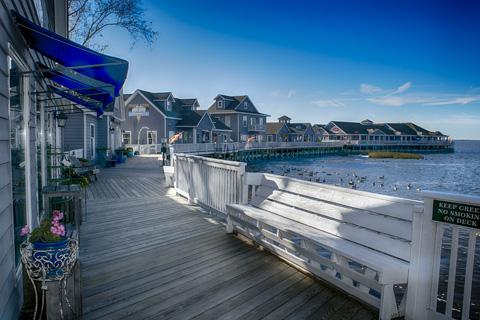Traveling in North Carolina
 North Carolina Outer Banks
North Carolina Outer Banks
North Carolina is a diverse state in the southern United States. The state has a variety of landscapes, with mountains, forests, and beaches all represented. The state's elevation ranges from sea level to 6,684 feet on Mount Mitchell, which is the highest point in North America east of the Mississippi. There are large cosmopolitan cities like Charlotte, and there are quaint college towns like Chapel Hill. North Carolina is the nineth most populous state in the country and the economy is currently centered around engineering, energy, biotechnology, and finance. Historically, the state's economy developed from the tobacco, textile, and furniture making industries.
North Carolina's climate varies depending on the region. The coastal areas have milder temperatures in the winter months with winter highs rarely going below 40 degrees Celsius. The Piedmont is colder than the coast with occasional snowfalls and frequent sleet or freezing rain. The mountains are the coolest area and winter highs occasionally falling into the low 20s Fahrenheit. Thunderstorms are common during the summer months and tropical storms reach the state every three or four years.
Regions
North Carolina can be divided into three main regions. The mountain region has some of the highest elevations in eastern North America. It is also where you'll find the Great Smoky Mountain National Park and the Blue Ridge Parkway. The Piedmont has many diverse cities, universities, and college towns. The Coastal Plain has miles of beautiful beaches, the Outer Banks, and historic towns such as New Bern.
Major cities in North Carolina include the capital city of Raleigh, Asheville, Boone, Chapel Hill, Charlotte, Durham, Greensboro, New Bern, Wilmington, and Winston Salem.
Other popular places to visit include the Great Smoky Mountains National Park, the Appalachian National Scenic Trail, the Blue Ridge Parkway, Cape Hatteras National Seashore, Cape Lookout National Seashore, the Outer Banks, and Pinehurst.

 Budget Your Trip is all about finding out how much everything costs so that you can travel cheaper and longer. Created by avid travelers Laurie and Bryan, our goal is to help you plan your next trip on the right budget. With average daily travel costs that are calculated from the budgets of real travelers, plus an analysis of hotel and tour prices, you can find out how much money you need to plan your next adventure. We also have plenty of travel advice, accommodation reviews, and activity suggestions.
Budget Your Trip is all about finding out how much everything costs so that you can travel cheaper and longer. Created by avid travelers Laurie and Bryan, our goal is to help you plan your next trip on the right budget. With average daily travel costs that are calculated from the budgets of real travelers, plus an analysis of hotel and tour prices, you can find out how much money you need to plan your next adventure. We also have plenty of travel advice, accommodation reviews, and activity suggestions.